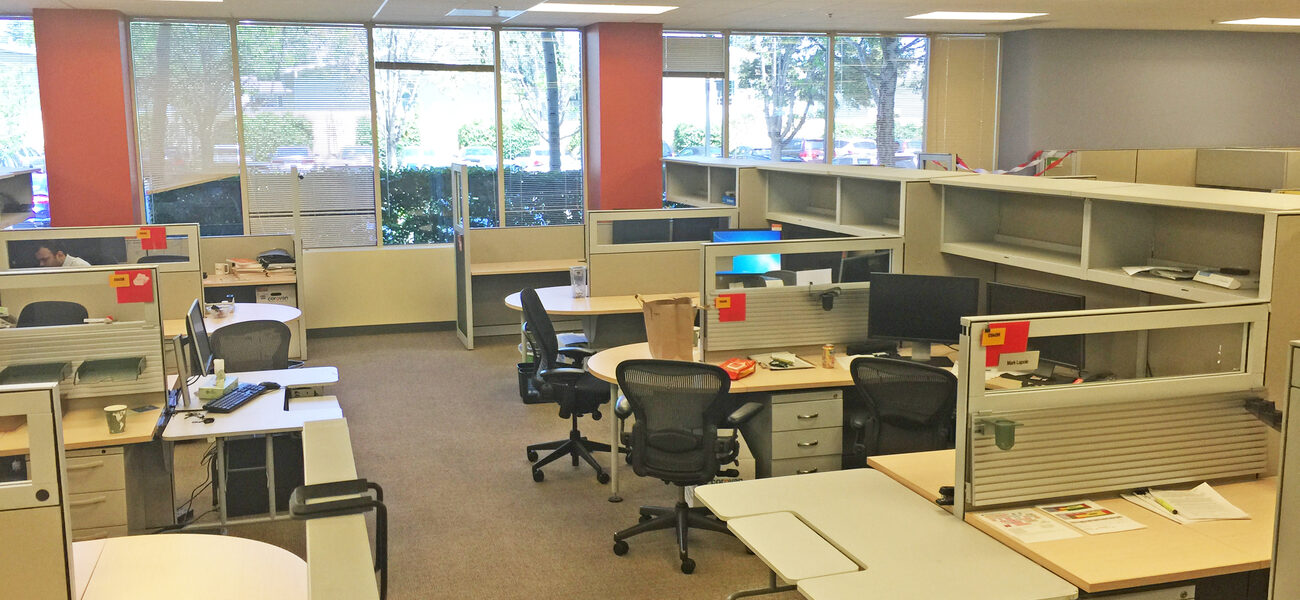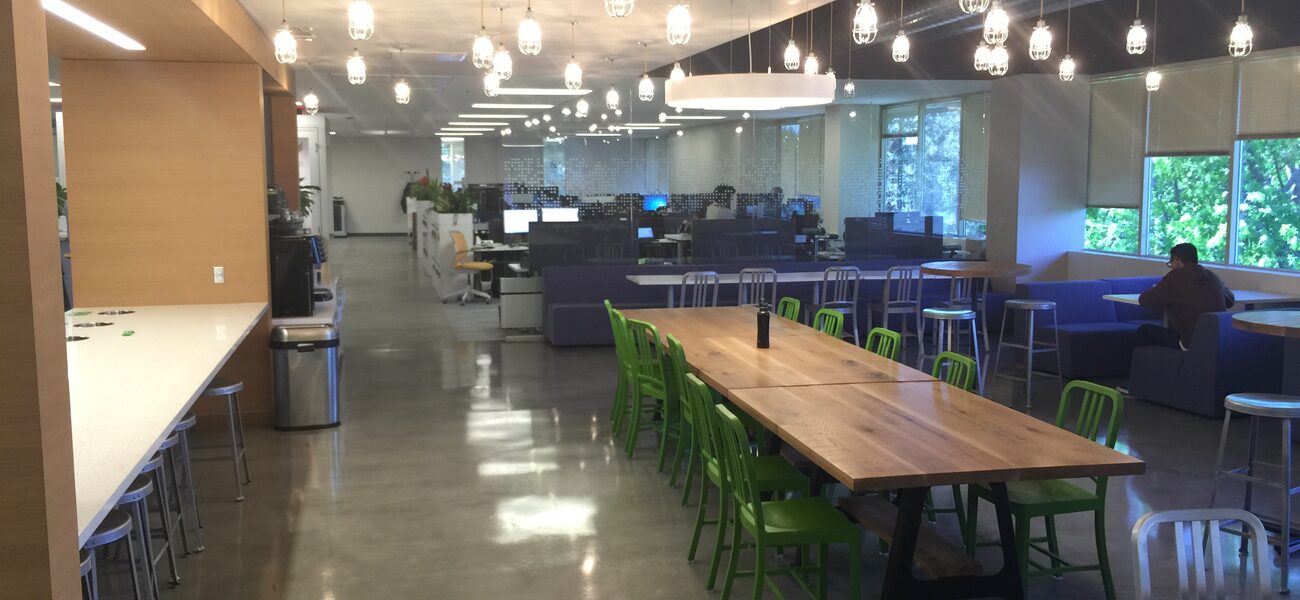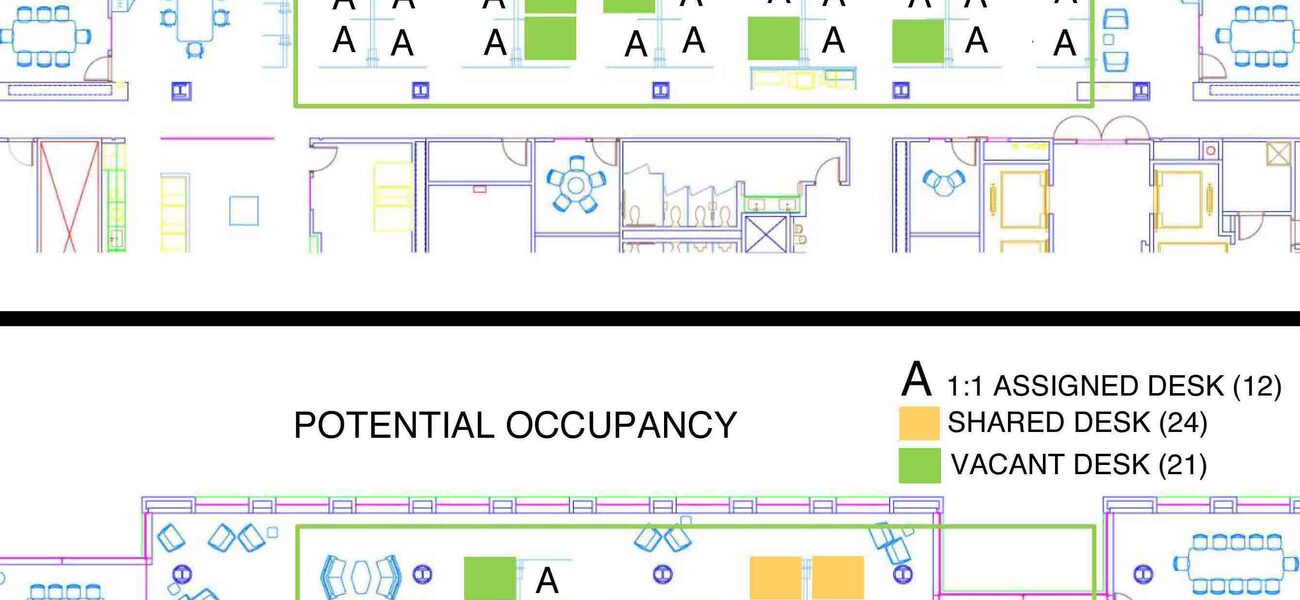Increased workforce mobilization at eBay is driving leaner, more sophisticated models for space planning that utilize a less than one-to-one ratio of desks to employees to maximize efficiencies and reduce operational costs. The new approach, developed in response to analysis of employee badge data and other metrics, is designed to better support the needs of today’s technology-enhanced mobile workforce.
While eBay has approximately 10 million sf of global facility space spread across three geographic regions—including warehouses and distribution centers—it is mostly an office-based business. In a recent case study involving an eBay technology group that was seeing low utilization within their office footprint, eBay found that employees were actually in the office less than 75 percent of the time, and at their desks less than 50 percent of the time.
“People are working, but they aren’t always working from their desks,” says Jeremy Salles, manager of global space planning at eBay. “We are working collaboratively. We are in meetings. We travel. We work remotely, which means we are often away from our individually assigned desks. So we are wasting money in real estate that isn’t being used.”
In addition to analyzing badge data, the space planning team looked at day-to-day activity on the individual floor level to gain a better understanding of when and how space was being used.
“Looking at badge metrics is the new thing for us, and we have realized a huge benefit out of it, because it allows us to see how many people are coming into the office on any given day and what the frequency is, so we can design better spaces for that population,” says Salles.
Data indicated that only a small part of the workgroup’s population needed assigned desks. So the space planning team physically audited space to try to understand when desks were being occupied, and what tools employees were using.
“We wanted to know what people were working with,” says Salles. “Are they on desktops? Are they on laptops? Are they using Macs or Dells? Are they using docking stations? Based on that information, we determined that a set number of people needed to remain in assigned desks because they were tethered to their equipment. But a large portion of the population wasn’t.”
Evolving Environments
As a result of the case study, eBay is now changing the way office environments are organized and furnished. New floor plans include an open landing zone adjacent to the elevator core that offers clear sightlines with low paneled glass walls across the entire office environment.
“We’ve tried to create a more open, collaborative office with more natural collision points,” says Salles. “All the desks are height adjustable so there are no more ergonomic tickets being filed. People can raise and lower desks to the height they need. We’ve gotten rid of keyboard trays and standup stools and gone to something that is more universal no matter who is using the equipment.”
In the original arrangement, there were 126 8-by-8 cubes on the ground floor and one collaboration room that was always occupied. With the new furniture model, and within the same floor plate size, they now have 150 bench-style desks and 18 separately programmed zones that provide quiet spaces, telephone booths, collaborative labs, and an open videoconference spaces. There are also low library tables and individual chat tables with high bar stools.
“We are trying to drive more people away from desks and into the collaborative zones, and make it as natural as possible,” says Salles, “with the understanding that it’s okay—we know you work this way—and we’re gearing the furniture to enable you to be successful at what you do.”
Changing Occupancy Management
The new data also drove eBay to change the way it manages occupancy by adopting a neighborhood model as opposed to the traditional approach of one-to-one assigned desks.
“Before we went to a neighborhood concept for managing occupancy on that floor, we had about 10 percent vacancy,” says Salles. “Using the neighborhood model there will take us well into 20 to 25 percent vacancy.”
Another one of the big advantages of using a neighborhood approach is that it greatly reduces friction in the new hire and move process.
“People don’t need to submit move requests if they are in a neighborhood,” says Salles. “They just pick up their stuff and move. It also simplifies on boarding. If you’ve already negotiated with the space manager, and they know how many people they can put in a given zone, you eliminate the bottleneck of approvals. After automating some of our processes, we’ve gone from a three- to five-day window for processing new hires down to less than one day.”
Data Wins
In addition to better enabling a modern mobile workforce, one of the main goals of eBay’s new approach to space planning and occupancy management is to create more operating leverage. The approach toward occupancy allows eBay to slow down the growth of the real estate portfolio. The need for expansion space is pushed further into the future for groups who switch from one-to-one occupancy to the neighborhood occupancy model.
“If you can get 50 people to use 40 desks instead of 50 desks, you save 10 desks worth of operating leverage,” says Salles. “So, for example, if your office run rate per desk is ballpark around $10K per year, then you’ve created $100K per year in operating leverage just from efficiency gains in space use.”
Of course, driving this kind of change management across an organization is always a challenge. No one wants to give up their assigned desk, even when they seldom use it. According to Salles, the key is to study occupancy data and provide that level of visibility to executive leadership to drive change from the top down.
“The data doesn’t lie,” says Salles. “You can go in and try to do all the convincing you want, but if you actually have raw data that you can bring and say this is what it is, you are more believable. For us, the recovery of 25 percent in unused office space was the result of gathering and sharing that kind of data. For other organizations, it might be 40 or 50 percent. You really don’t know until you start to look at it.”
By Johnathon Allen
This report is based on a presentation by Jeremy Salles at Tradeline’s 2014 Space Strategies 2014 conference.



